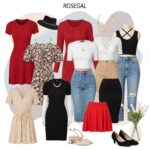The world of colors is vast and intricate, with each hue carrying its own unique story and significance. Among these, “cyanová” stands out as an intriguing and enchanting shade of blue. This article delves deep into the world of cyanová, exploring its origins, cultural significance, psychological effects, and applications across various fields. From art and design to psychology and marketing, cyanová holds a unique place in the spectrum of colors.
Origins and Etymology of Cyanová
The term “cyanová” is derived from the word “cyan,” a color that sits between blue and green on the color wheel. Cyan itself has a rich history, with its name originating from the Greek word “kyanos,” meaning dark blue. Cyanová, however, is a specific variant of cyan, characterized by its vibrant and slightly more intense blue-green hue. This shade is often associated with the sky, the sea, and the natural world, evoking a sense of calm and tranquility.
Cultural Significance
It has been embraced by various cultures around the world, each attributing its own meanings and symbolism to the color. In ancient Egypt, blue was a symbol of the heavens and was often used in the decoration of temples and tombs. The Egyptians believed that blue had protective qualities and could ward off evil spirits. Similarly, in ancient Greece and Rome, blue was associated with the gods and was often used in religious art and architecture.
In more recent times, It has been adopted by various cultural and artistic movements. In the 19th and early 20th centuries, the Arts and Crafts movement, led by figures like William Morris, embraced natural colors and materials, with cyanová often appearing in textiles and wallpaper designs. The color’s association with nature and the outdoors made it a popular choice for this movement, which sought to bring the beauty of the natural world into people’s homes.
Psychological Effects
Colors have a profound impact on human psychology, and It is no exception. This shade of blue-green is known for its calming and soothing effects, making it a popular choice in environments where relaxation and tranquility are desired. Studies have shown that exposure to blue and green hues can lower blood pressure, reduce stress, and promote a sense of well-being. It, with its blend of these two colors, is particularly effective in creating a serene atmosphere.
In the realm of color psychology, It is often associated with qualities such as trust, reliability, and stability. This makes it a popular choice for brands and organizations that want to convey a sense of dependability and professionalism. Additionally, It is linked to creativity and inspiration, making it a favored color in artistic and creative spaces.
Applications in Art and Design
It has a long history of use in art and design, with its vibrant and captivating hue making it a favorite among artists and designers. In the world of fine art, It has been used by numerous painters to create stunning landscapes, seascapes, and abstract works. The color’s association with the natural world makes it a popular choice for artists who seek to capture the beauty of the outdoors.
One notable example of It in art is the work of French Impressionist painter Claude Monet. Monet’s series of paintings depicting the water lilies in his garden at Giverny often feature shades of It, capturing the tranquil and reflective quality of the water. The color’s ability to evoke a sense of calm and serenity is evident in these works, which remain some of Monet’s most celebrated pieces.
In the realm of design, It is frequently used in interior design, fashion, and graphic design. Its calming and soothing effects make it a popular choice for bedroom and bathroom decor, where relaxation and tranquility are paramount. In fashion,It is often used in clothing and accessories, with its vibrant hue making it a standout choice for both casual and formal wear. In graphic design, It is used to create eye-catching and memorable designs, with its unique blend of blue and green making it a versatile and dynamic color.
Cyanová in Nature
Nature is a rich source of inspiration for the color cyanová. This shade of blue-green is commonly found in various natural settings, from the depths of the ocean to the vast expanse of the sky. The color’s association with water is particularly strong, with many bodies of water exhibiting shades of cyanová, especially in tropical regions where the water is clear and pristine. The vibrant hue of cyanová can also be seen in certain plants and flowers, adding to the color’s natural appeal.
One of the most striking examples of cyanová in nature is the shallow waters of tropical seas and oceans. The clear, turquoise waters of places like the Maldives, the Caribbean, and the Great Barrier Reef are often tinged with shades of cyanová, creating breathtakingly beautiful seascapes. This color is not only visually stunning but also evokes a sense of calm and relaxation, making these destinations popular for those seeking a peaceful retreat.
In the plant kingdom, cyanová can be found in various species of flora. Certain types of algae and seaweed, as well as some exotic flowers, exhibit this vibrant hue. The blue-green coloration of these plants often serves as a form of camouflage or attraction, playing a crucial role in their survival and reproduction. The natural occurrence of cyanová in both aquatic and terrestrial environments highlights the color’s versatility and enduring appeal.
Cyanová in Technology and Media
In the modern world, cyanová has found new applications in technology and media. The color’s vibrant and eye-catching hue makes it a popular choice for digital interfaces, graphic design, and advertising. In web design, cyanová is often used to create clean, modern, and visually appealing websites. Its calming effects make it a suitable choice for user interfaces, helping to create a pleasant and stress-free user experience.
In the realm of digital media, cyanová is frequently used in branding and advertising. Companies and organizations often choose this color to convey a sense of trust, reliability, and innovation. For example, many tech companies use shades of blue and green in their logos and branding materials, with cyanová being a popular choice due to its association with both creativity and professionalism. The color’s ability to stand out while still conveying a sense of calm and stability makes it an effective tool in the competitive world of digital marketing.
Cyanová in Fashion
The world of fashion is no stranger to the allure of cyanová. This striking shade of blue-green has made its mark on runways, red carpets, and everyday wear, becoming a favorite among designers and fashion enthusiasts alike. The versatility of cyanová allows it to be used in a variety of styles, from bold and dramatic to soft and understated.
In haute couture, cyanová is often used to create show-stopping gowns and statement pieces. Designers like Elie Saab, Versace, and Gucci have incorporated this vibrant hue into their collections, showcasing its ability to add a touch of elegance and sophistication to any outfit. The color’s association with nature and tranquility also makes it a popular choice for spring and summer collections, evoking a sense of freshness and renewal.
In everyday fashion, cyanová can be found in a wide range of clothing and accessories. Its vibrant and eye-catching hue makes it a popular choice for casual wear, adding a pop of color to any outfit. From t-shirts and dresses to shoes and handbags, cyanová is a versatile and stylish choice that can be easily incorporated into any wardrobe. The color’s calming and soothing effects also make it a popular choice for activewear and loungewear, providing a sense of relaxation and comfort.
Cyanová in Marketing and Branding
In the competitive world of marketing and branding, color plays a crucial role in capturing attention and conveying a brand’s message. Cyanová, with its unique blend of blue and green, is a powerful tool for marketers and brand strategists. The color’s association with trust, reliability, and creativity makes it an ideal choice for a wide range of industries, from technology and finance to health and wellness.
Many companies use cyanová in their logos, packaging, and advertising materials to create a strong and memorable brand identity. For example, tech giants like Dell and Samsung incorporate shades of blue and green into their branding, with cyanová often being a key component. The color’s ability to convey a sense of innovation and professionalism makes it a popular choice for these companies, helping to establish trust and credibility with their audience.
In the health and wellness industry, cyanová is often used to create a sense of calm and tranquility. Brands that focus on relaxation, meditation, and self-care frequently use this color in their branding to evoke a sense of peace and well-being. The color’s soothing effects make it an ideal choice for products and services aimed at reducing stress and promoting relaxation.
Conclusion
Cyanová is a captivating and versatile shade of blue-green that has found its place in various aspects of human life. From its historical and cultural significance to its psychological effects and applications in art, design, fashion, and marketing, cyanová continues to enchant and inspire. Its unique blend of blue and green evokes a sense of calm and tranquility, making it a powerful tool in creating serene and relaxing environments. As we continue to explore the world of colors, cyanová stands out as a timeless and enchanting hue that will undoubtedly continue to captivate and inspire for generations to come.

















Trackbacks/Pingbacks